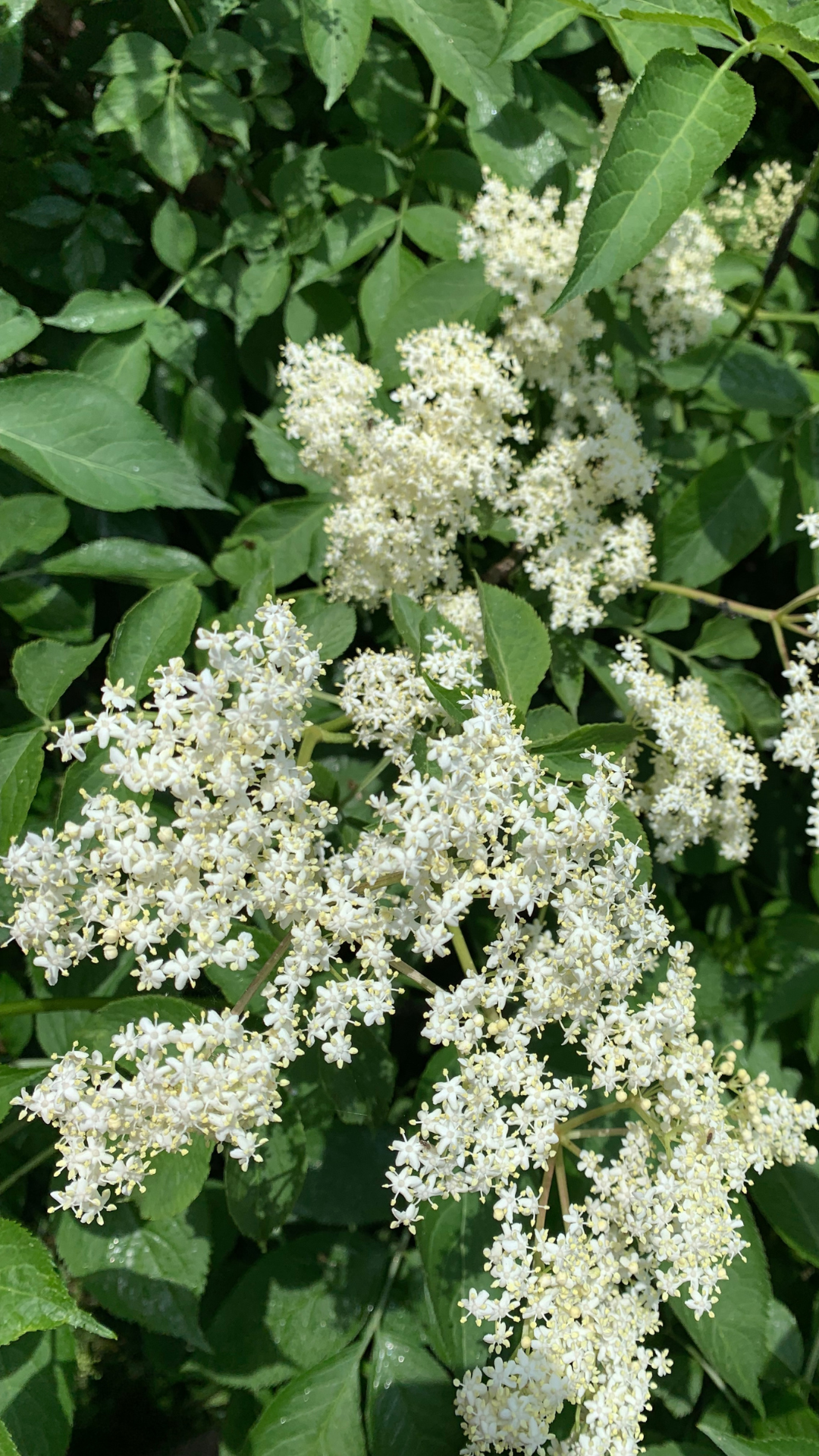Elderberry & Elderflower
Elder is a common woodland shrub found throughout Europe and has traditionally been prized as a source of both food and medicine [1]. In summer, they produce a gorgeous blossom of little white flowers (as shown in the picture above), which are often used to produce a delicious cordial. Later on in the autumn, these flowers turn into dark purple (so dark they appear black) berries, which can be picked and dried or frozen for later use. They're commonly used to make the well-known elderberry syrup.
Common Names: Elder, Elderflower, Elderberry, Black Elder
Botanical Name: Sambucus nigra
Family: Adoxaceae
Parts used: Flowers & Berries
Description
The Elder tree is sometimes referred to as a complete medicine chest because traditionally all parts of the plant were used - the flowers, berries, leaves and bark. The leaves were typically made into an ointment for bruises, sprains and wounds [2].
Elder flowers have what we call anti-catarrhal properties, meaning that they help to reduce the formation and secretion of mucus in the upper airways. This is why it's a great remedy for conditions like colds, hay fever and sinusitis. The blossoms appear in early summer which is perfect timing for those suffering from summer allergies.
The berries have been shown to have anti-viral properties against various strains of the influenza virus and if taken during an active infection, help to reduce the duration and severity of the illness. The berries have a beneficial effect on the immune system and so are used as prevention of cold and flu. The berries are usually ready to harvest in late summer/early autumn, which is perfect timing as we're more prone to infections during these colder months.
Click here for a simple elderberry syrup recipe!
Main constituents
Flavonoids, anthocyanins, mucilage, tannins, cyanogenic glycosides, viburnic acid, phenolic acid, volatile oil, berries contain A and C [3, 4].
Actions
Febrifuge, Anticatarrhal, Antiviral, Diaphoretic, Diuretic
Indications
*Indications simply mean what conditions this herb is typically used for
Common cold, Coughs, Flu, Fever, Hay fever, Sinusitis, Nasal congestion
How to use it
Infusion: Make an infusion of the flowers and drink 1 cup 3 times a day for hay fever, sinusitis, nasal catarrh and fevers.
Decoction: Make a decoction of the fresh or dried berries and drink 1 cup 3 times a day.
Tincture: Take 20-40 drops of tincture of the flowers or berries 3 times a day. The berries can be combined with Echinacea for cold & flu prevention
Dosage
20-40ml per/week (tincture)
Safety considerations
When foraging for the berries, don't eat them raw as too many can be toxic.
References
[1] Plants of the world online. Sambucus nigra. [online] Available at: [Accessed 11th February 2021].
[2] Hoffman, D. (2003). Medical Herbalism. Vermont: Healing Arts Press.
[3] Thomsen, M. (2020). Phytotherapy Desk Reference. 5th ed. Australia, 580.
[4] Neal's Yard Remedies. (2011). Cook, Brew and Blend Your Own Herbs. London: Dorling Kindersley, 104.
When using this blog, any link you click may result in an affiliate payment to me, I earn a commission from qualifying purchases, at no extra cost to you.



